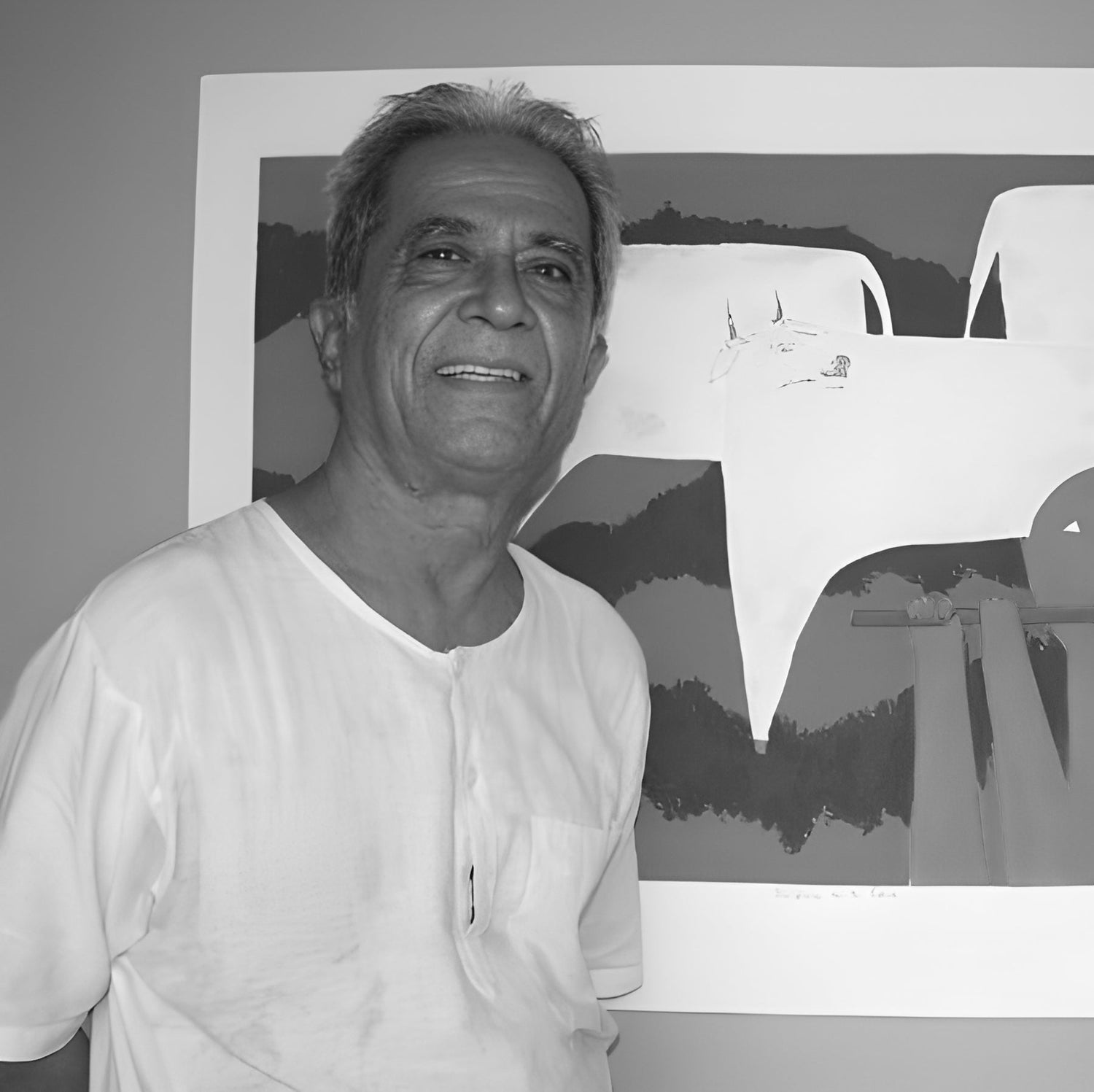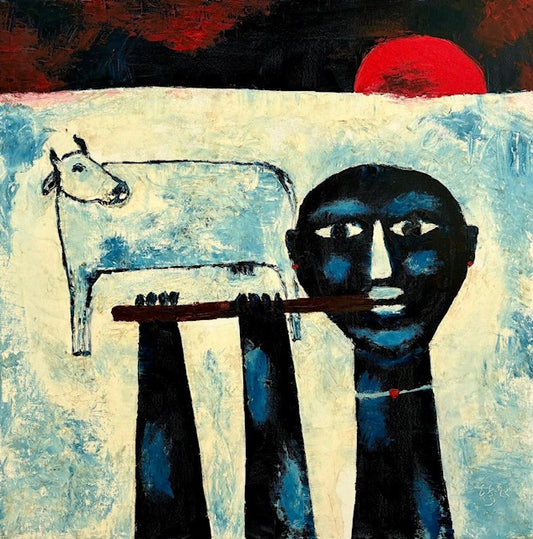
HAKU SHAH
Haku Shah brought to Indian modernism a rare, intuitive sensitivity grounded in the spiritual and visual rhythms of rural life. A figurative painter aligned with the Baroda School, his work moved beyond formal academic frameworks to embrace the earthy lyricism of folk and tribal communities. His imagery, flautists, trees, cattle herders, and meditative figures, echoes not only the daily life of village India but also the quiet metaphysics that underscores its traditions. There is a clarity and stillness to his compositions, a refusal of spectacle, in favor of subtle, layered truths.
His early exposure to socially engaged practices shaped a lifelong belief in the power of art as cultural conscience. As a child, Shah was drawn to painting, poetry, and performance. His involvement in wall murals protesting injustice became a starting point for a career that would never lose sight of art’s social function. A transformative period at the Gandhi Ashram introduced him to the visual language of the Rani Paraj tribe. Their raw, magical imagery had a profound influence on Shah’s visual vocabulary—an influence he continued to explore through years of ethnographic research and fieldwork.
At the National Institute of Design in Ahmedabad, his pedagogical role extended into cultural preservation. Supported by a Nehru Fellowship, Shah undertook extensive documentation of tribal rituals and material practices. This research informed both his painting and curatorial work, culminating in international collaborations such as the Art of Unknown India exhibition with Stella Kramrisch, which brought Indian village and tribal art to a global audience in the 1960s.
He founded the Folk Art Museum in Ahmedabad and was instrumental in the conception of Shilpgram in Udaipur, projects that reflected his conviction that traditional knowledge systems must be honored, sustained, and made visible. In painting, he consistently returned to archetypal rural motifs, trees, animals, musicians, not as nostalgic emblems, but as living symbols carrying centuries of cultural memory.
Shah’s work stands at the intersection of anthropology, spirituality, and aesthetics. It carries forward oral traditions and local mythologies while speaking to a wider, global human condition. His legacy is one of quiet insistence: that the so-called ‘unknown’ or ‘marginal’ is in fact central, vital, and artistically indispensable. In Haku Shah’s visual universe, the wisdom of the village is not lost, it endures, luminous and unwavering.
-
Haku Shah
Untitled ( Shyam )
Regular price Rs. 0.00Regular priceUnit price per



